
While San Nicolas is now mostly populated by warehouses and warehouse condominiums (It’s not called the “Bodega of Binondo” for nothing), the district still has a sizable number of Spanish era houses and buildings. Back in the day, San Nicolas was home to Indios, Mestizos, and Chinese immigrants alike. An industry town similar to Binondo, San Nicolas was home to businessmen, artisans, and craftsmen, and their influence can still be felt faintly amidst the hustle and bustle of commerce that defines the place nowadays.
San Nicolas was founded in 1598 by the Dominican Order. The town was home to Mestizos, Sangleys, and Indios alike, and this unique dynamic and proximity to Binondo and Intramuros made this town desirable to live in. San Nicolas was also the site where Chinese immigrants were herded to before being allowed to go anywhere. The Chinese would be brought to Engineer Island (Present day Baseco) before being brought over to this area, where they were “disinfected” by the Spanish (by bombarding them with water, whoohoo). After a bit of quarantine, they would be brought to the settlements through the esteros.
Places of Interest
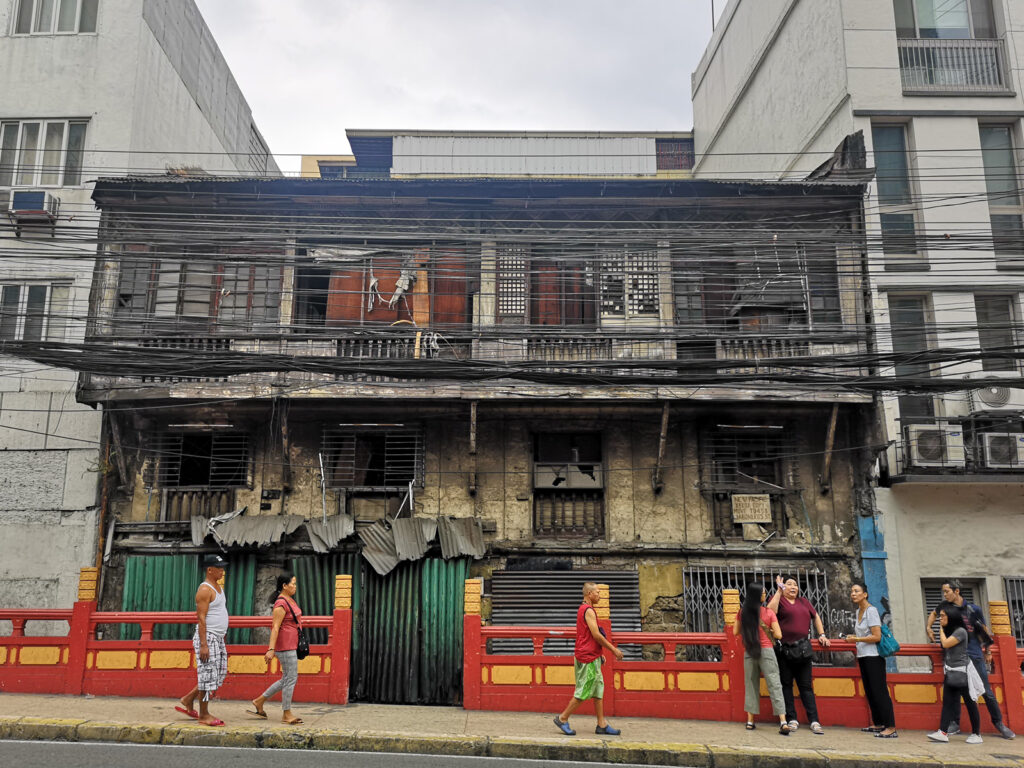
This dilapidated building once housed the Panciteria Macanista De Buen Gusto, a popular panciteria back in the day. The panciteria was so popular, it made it to Jose Rizal’s second book, El Filibusterismo.
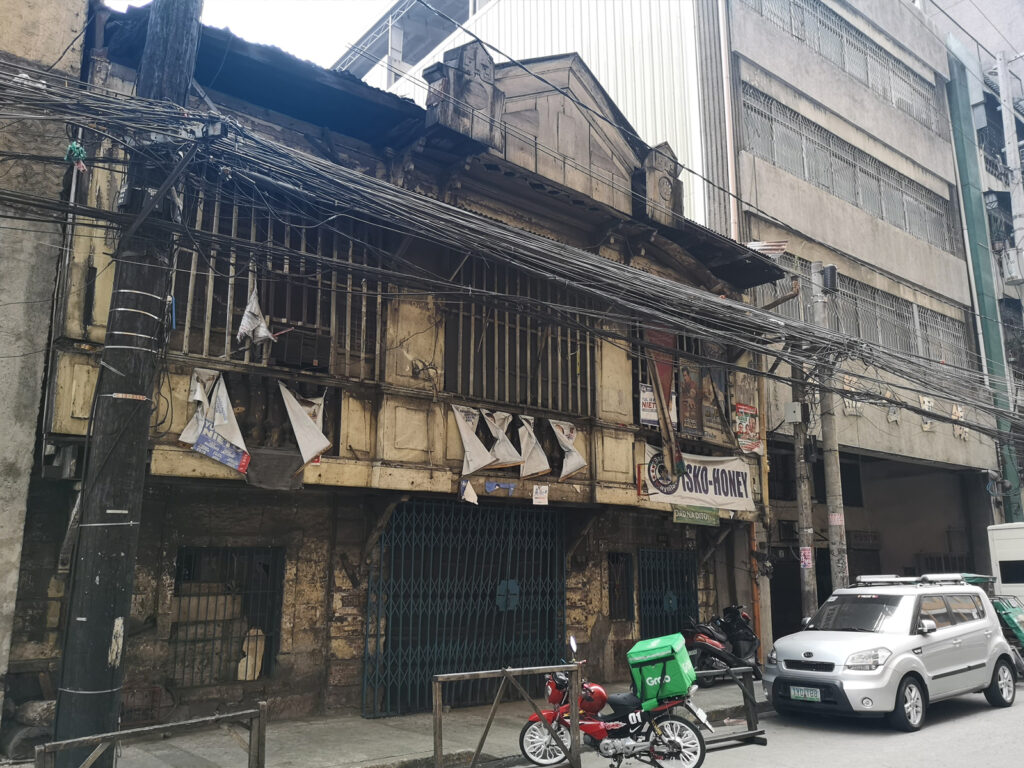
The Casa Tribunal de Naturales is a courthouse for the native residents of Manila. Aside from the typical hallmarks of Bahay na Bato architecture, the Casa tribunal has that unique roof feature that serves to distinguish it from other houses.
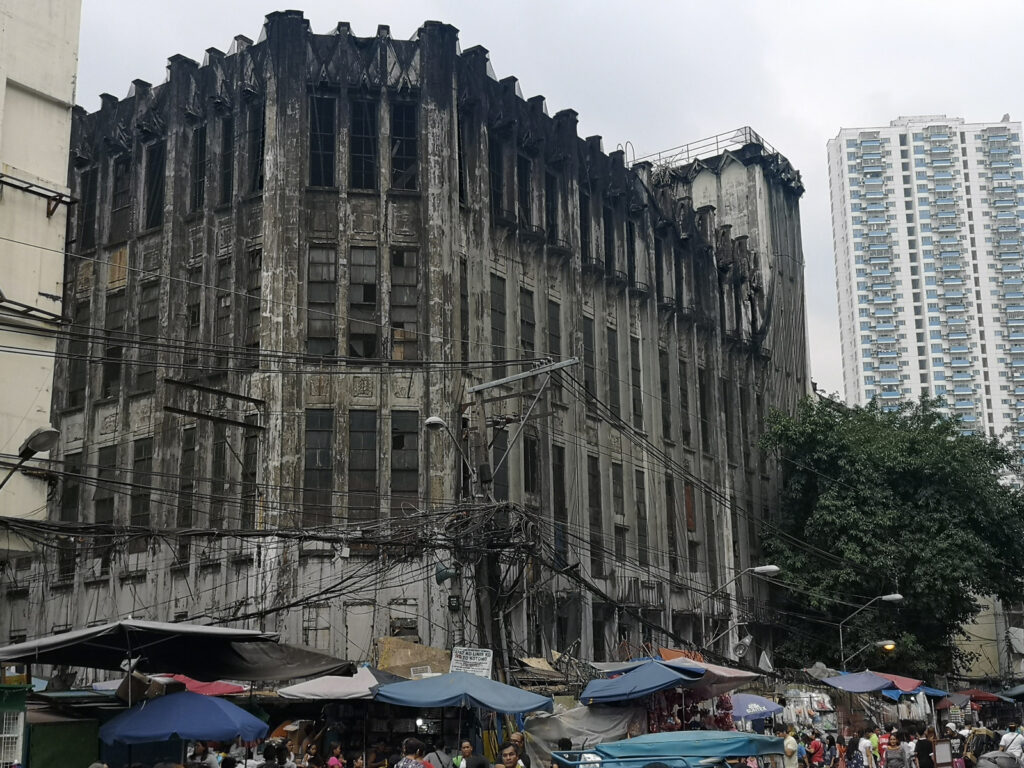
The Ides O’Racca Building was built in 1935 by Dr. Isidoro de Santos, who intended to make it a cold storage facility. The building was then sold to the O’Racca company and turned into a Japanese confectionery firm. The building suffered damage at the hands of the Japanese, who used it as a base during World War II, and then by the Americans, who made it a barracks. After the war, the Ides O’Racca was returned to the Philippine government and used as offices for various agencies before it was eventually abandoned. In 2014, the Ides O’Racca building was declared a Significant Cultural Property by the National Museum of the Philippines, and as such, is protected from demolition, under the National Cultural Heritage Act of 2009.
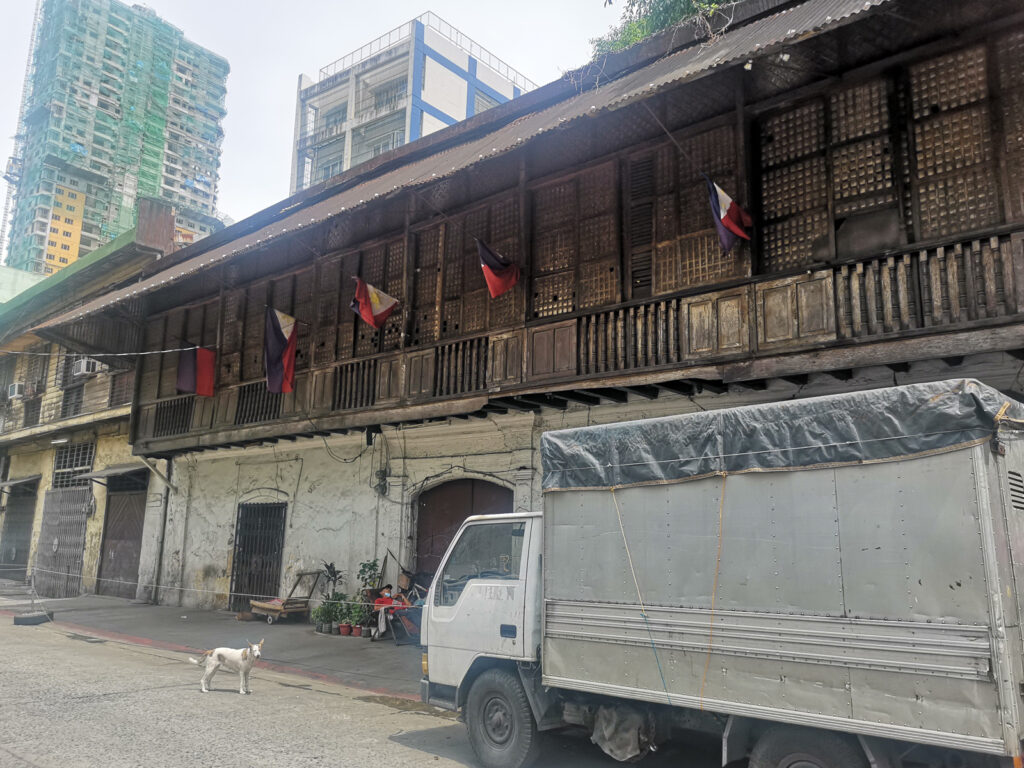
This rather regal but run down house was the birthplace of Antonio Luna, one of our celebrated heroes. Unfortunately, the house has seen better days, and its future is uncertain.
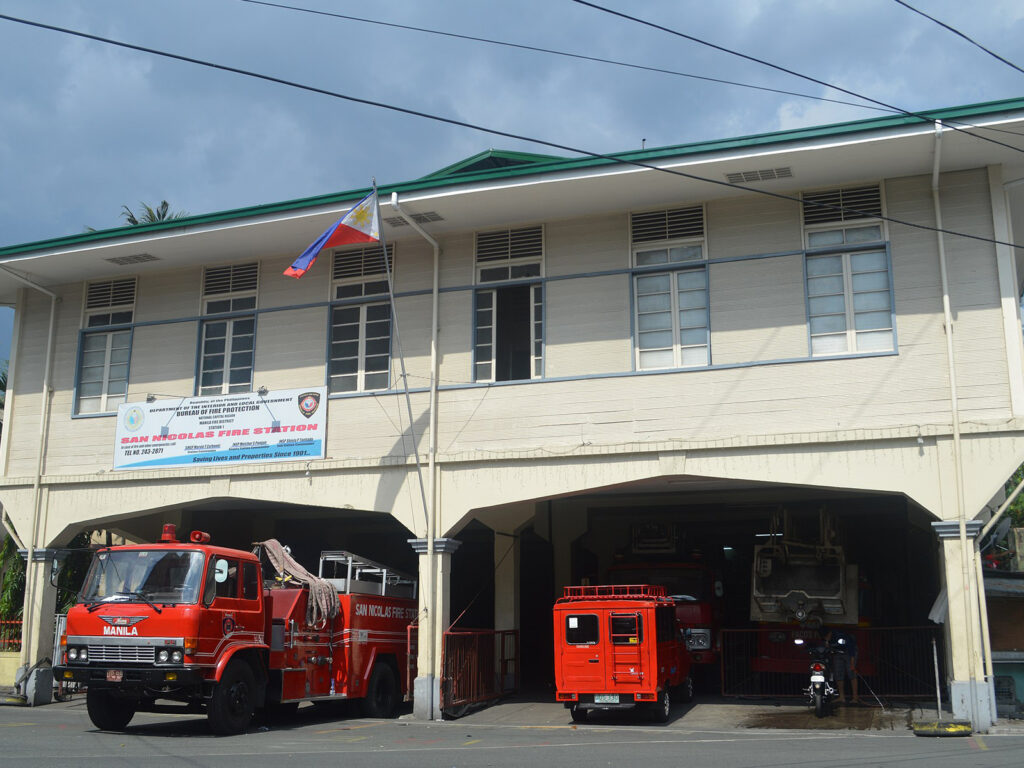
The San Nicolas Fire Station is the first Fire Station to ever be built in the Philippines. Built during the American Period, the Fire Station’s architecture is reminiscent of typical wood-based architecture prevalent during the American Era. This building was once known as “the cradle of Boxing” in Manila because it once featured a full-sized boxing ring.
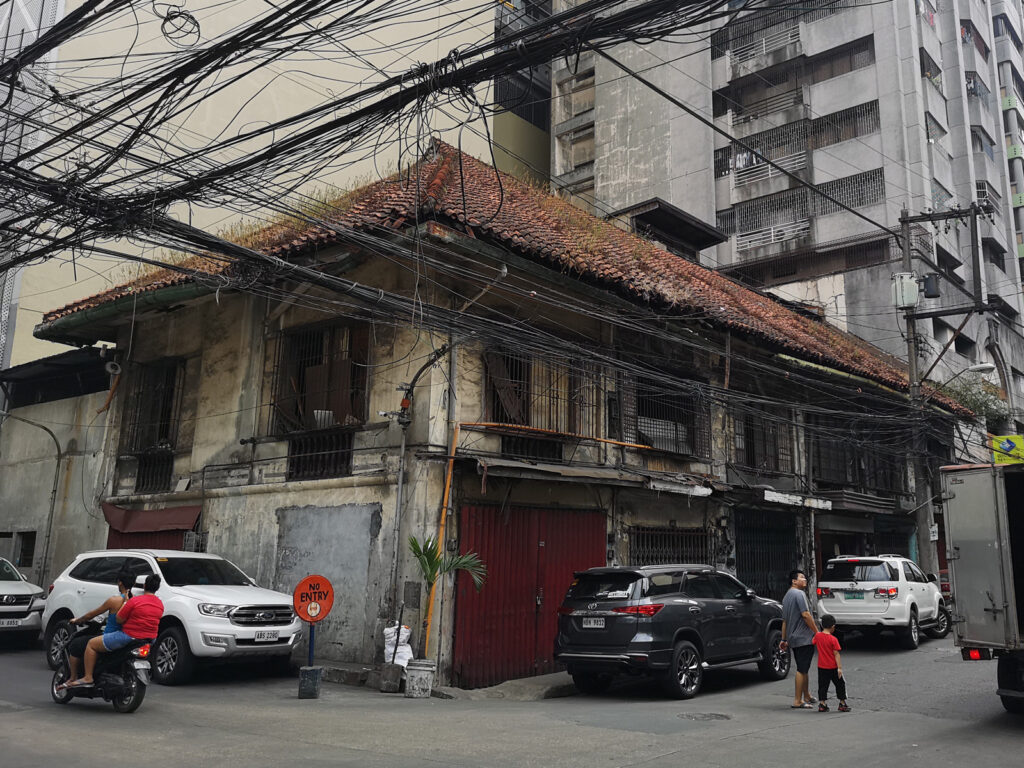
San Nicolas has an array of heritage house in varying conditions. The house shown here is unique due to its stone tile roof, a unique fixture in the era of Bahay na Bato.
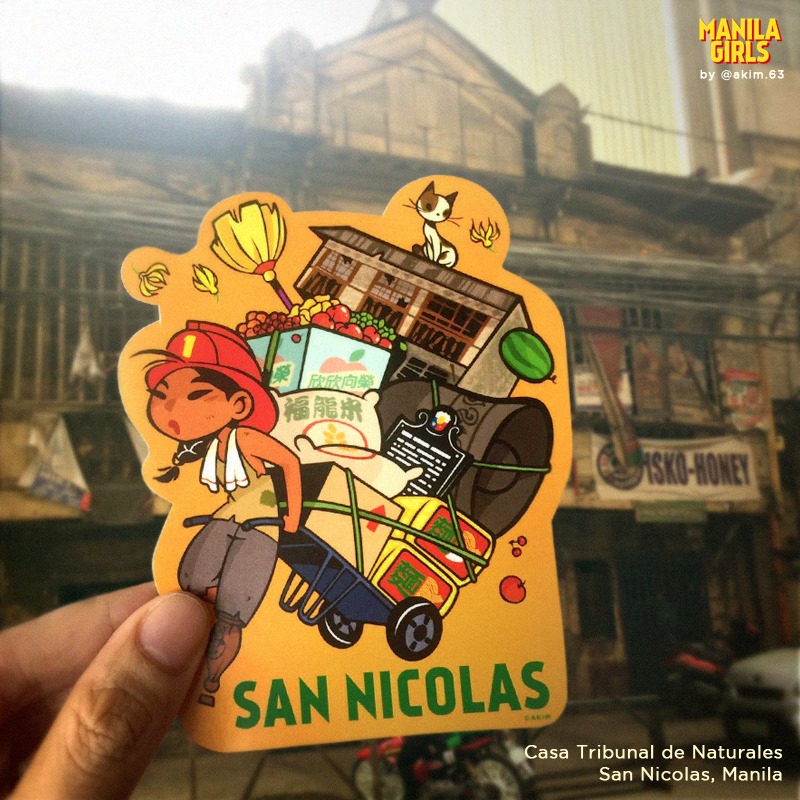
“She is the sister of Binondo hiding in the shadows
Often ignored, never adored, unlike her famous twin across the borough
She is disdained, scorned, looked down upon
Because she is mute, a migrant, unbaptized, and gritty
She grinds hard daily and never complains
Breaking even from the fruits of labor is her only aim
She has a lot to carry and a lot to share
from the tales of trade, housewares, and massive heritage that you cannot compare
Crippled with time and covered with grime
She carries on steady with hard work and tenacity
A few really see hermana San Nicolas’ beauty
And it’s a critical part of Manila’s identity that’s doomed to end in tragedy.”
“San Nicolas” sticker copy, written by Kenny Tai
Where to eat

Ilang-Ilang Restaurant
Don’t let the overly dated interiors deter you. This restaurant is an absolute treasure. Ilang-Ilang is a bastion for Hokkien Cuisine, and their dishes are to die for.
Ilang-Ilang Street, San Nicolas, Manila
About the Manila Girls™
The Manila Girls are humorous and sarcastic personifications of popular districts and locations in Manila and beyond. While the Girls appear cute and adorable, their appearance and depiction reflect the current state of the areas they represent. Miss Escolta look dapper yet highly disheveled, Miss San Nicolas has a peg leg, Miss España gleefully jumps across flooded waters, and so on and so forth. The frankness of the statements the Manila Girls make stand in stark contrast to their cute appearance, making it easier to absorb the message the Girls are trying to convey.
The Manila Girls are a creation of Kenny Tai under her Akim brand.

Copyright 2021 WanderManila.online





